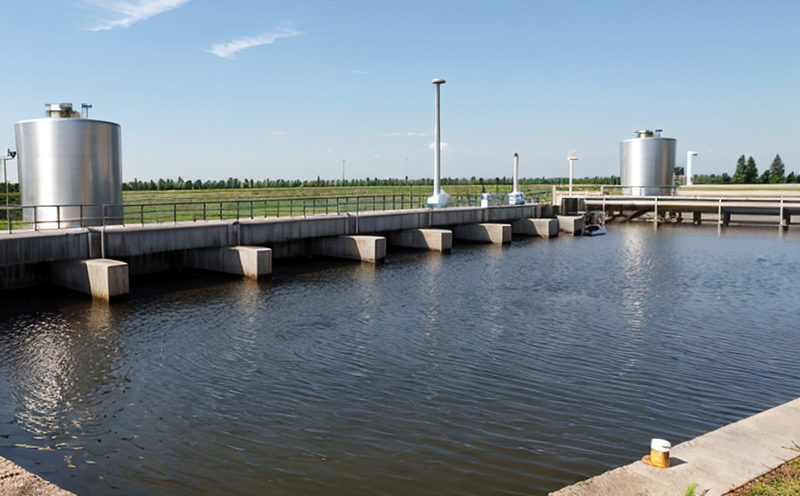ISO 5667-3 Preservation and Handling of Water Samples for Microbiological Testing
The ISO 5667-3 standard provides comprehensive guidelines on how to properly preserve and handle water samples before microbiological testing. This standard is critical in ensuring accurate, reliable results which are essential for maintaining the quality and safety of water and wastewater systems.
Water and wastewater often contain a wide range of microorganisms that can influence the outcome of tests and the interpretation of results. Proper preservation and handling of these samples can prevent contamination, ensure microbial stability, and preserve the integrity of the sample throughout transport and storage until testing is conducted. This standard covers various aspects such as sampling procedures, container types, temperature control during transit, and methods for preserving the microbiological content.
The preservation techniques outlined in ISO 5667-3 are designed to minimize changes in microbial communities that may occur due to environmental factors like temperature fluctuations or chemical interactions. By adhering strictly to these guidelines, laboratories can ensure consistent results across different samples and batches, thereby enhancing their reputation for reliability and accuracy.
The standard also emphasizes the importance of accurate documentation throughout the sampling process, including details about sample location, collection time, and handling conditions. This information is crucial for reproducibility and traceability in case discrepancies arise during analysis or regulatory audits.
Understanding the nuances involved in preserving water samples according to ISO 5667-3 helps laboratories comply with stringent quality control measures required by various industries. Compliance ensures that results are acceptable not only within the laboratory but also across different jurisdictions, which is particularly important for multinational corporations operating globally.
The standard applies primarily to potable water sources, industrial wastewater discharges, and other environments where microbiological contamination could pose risks to public health or environmental quality. By following its provisions, laboratories can contribute significantly towards safeguarding human health and the environment from potential threats posed by pathogenic microorganisms present in these samples.
Compliance with ISO 5667-3 is not just beneficial for regulatory compliance but also enhances the reputation of a laboratory within its industry. It demonstrates commitment to excellence through adherence to best practices recognized internationally.
Industry Applications
| Application Area | Description |
|---|---|
| Potable Water Monitoring | Ensuring safe drinking water by detecting harmful pathogens early. |
| Industrial Wastewater Treatment | Avoiding environmental violations due to improper discharge of contaminated effluents. |
| Water Quality Research | Studying the effects of different treatment processes on microbial communities. |
The ISO 5667-3 standard finds extensive application in various sectors including municipal utilities, private water companies, and research institutions. Its primary goal is to provide a robust framework for handling and preserving water samples before they undergo microbiological analysis.
Eurolab Advantages
At Eurolab, we pride ourselves on offering cutting-edge services that meet the highest industry standards. Our proficiency in implementing ISO 5667-3 ensures accurate and reliable results every time. Here's why you should trust us:
Comprehensive Training: Our technicians undergo rigorous training to ensure they understand all aspects of sample preservation.
State-of-the-Art Facilities: Equipped with the latest equipment, our laboratories provide an environment conducive to precise handling and storage conditions.
Experienced Staff: With years of experience in microbiological testing, our team ensures consistency in results.
Regulatory Compliance: We adhere strictly to all relevant regulations ensuring that our findings are accepted globally.
Client Confidentiality: Your data and samples remain secure throughout the entire process.
Rapid Turnaround Times: Efficient workflow processes allow us to deliver results promptly without compromising on quality.
We take pride in our commitment to excellence, ensuring that each sample we handle meets or exceeds industry expectations. Whether you're a regulatory body or an industrial entity, Eurolab is your trusted partner for all microbiological testing needs related to water and wastewater samples.
Why Choose This Test
Ensures accurate results by maintaining microbial stability throughout sample handling.
Meets regulatory requirements, enhancing compliance capabilities of your organization.
Reduces the risk of contamination and degradation during transit and storage.
Aids in early detection of potential health hazards associated with waterborne pathogens.
Supports robust research efforts aimed at improving water treatment technologies.
Facilitates consistent reporting across different batches, enhancing data reliability.
Maintains the integrity of samples for extended periods without compromising on quality.
Selecting this test is a strategic decision that aligns with your organization's goals. By choosing Eurolab for ISO 5667-3 compliance services, you gain access to experienced professionals who understand the nuances involved in preserving water samples properly.





